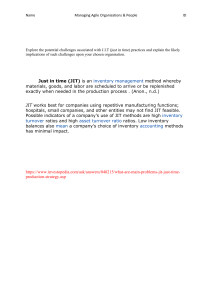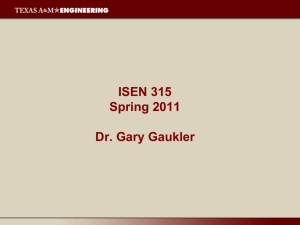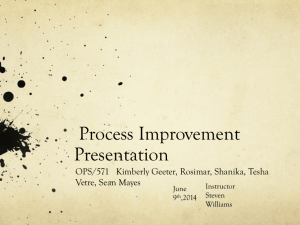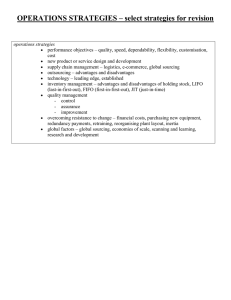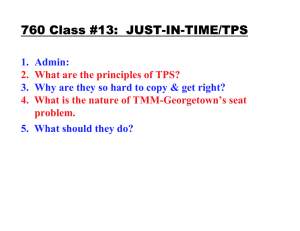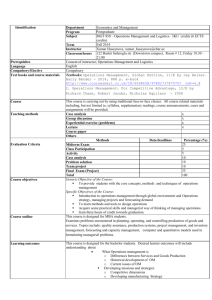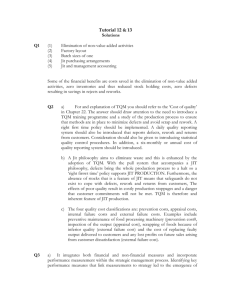Lean Operations: Process Synchronization and Improvement
advertisement
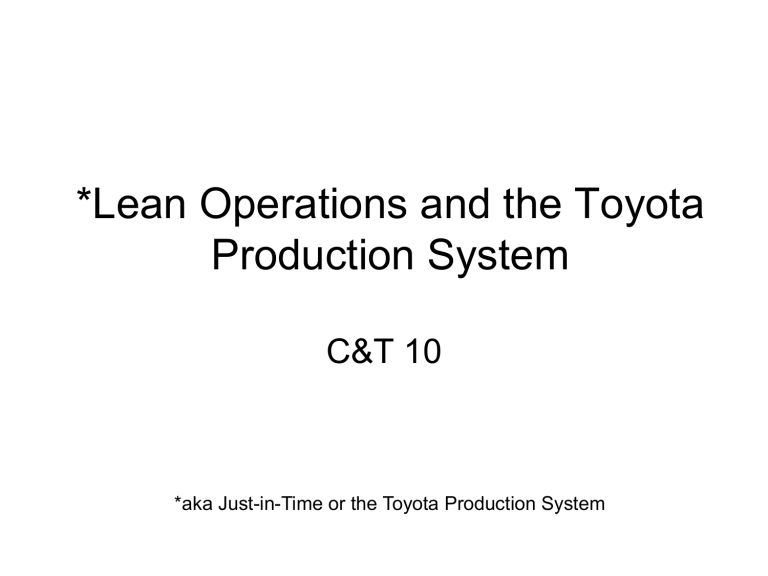
*Lean Operations and the Toyota Production System C&T 10 *aka Just-in-Time or the Toyota Production System Just In Time More than just low inventory JIT goals: – – – – Exactly what is needed Exactly how much is needed Exactly when it is needed Exactly where it is needed. Achieved by: – eliminating disruptions – making the system flexible – eliminating waste Batch Sizing $ 0 Q 7 Wastes 1. 2. 3. 4. 5. 6. 7. Defects Too much product Carrying inventory Waiting Unnecessary processing Unnecessary worker movement Transporting materials The Four Rules 1. How people work 2. How people connect 3. How the production line is constructed 4. How to improve Decoding the DNA of the Toyota Production System, Spear & Bowen, Harvard Business Review, 9/10 1999 pp. 96-106. Cellular Layouts • Product vs. process layout – Transportation – Transfer batch – Communication – Feedback 5S Seiri 整理 Sort Seiton 整頓 Set in order Seiso 清掃 Shine Seiketsu 清潔 Standardize Shitsuke 躾 Sustain Visual Systems • Kanbans • Andons • Footprinting & shadow boards • Color coding Worker Training • Teams • Cross-training • Quality Circles • Kaizen • Process quality Schonberger’s JIT diagram Ideas for cutting lot sizes Ideas for improving JIT performance Lot Size Reduction JIT production Less inventory in the system Reduced buffer inventories and/or workers Heightened awareness of problems and causes Less indirect costs for inventory Ideas for controlling defects Fast feedback on defects Scrap/quality Control Higher quality finished goods Fewer rework labor hours Smoother Output Rates Less Material Waste Less material, labor & indirect = higher productivity Less inventory = faster response, less admin & better forecasting
